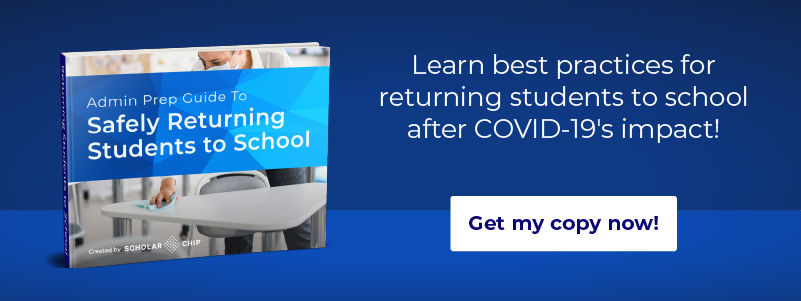In May 2020, schools around the world started reopening. Their priority was to minimize risks after COVID-19. While the United States is considering safe ways to reopen primary and secondary schools, school leaders can use the lessons learned from international school systems to take appropriate precautions.
For instance, in China, the country where the COVID-19 outbreak began, precautions to prevent further infections have been significant. School children are given health checks twice daily, and in some areas of the country, class sizes have dropped from fifty to thirty students.
In Norway, class sizes have been reduced to fifteen students for grades one through four and twenty students in grades five through seven; older students are learning from home. Classroom desks have been broken apart to promote physical distancing, and instructors can use outdoor space.
There are four important factors to minimize risks after COVID-19: temperature checks, limited class sizes, social distancing in classrooms, and remote learning. Let’s go over how you could consider these factors when planning your 2020-2021 school year.
1. Temperature Checks
In all the schools that have reopened around the world, temperature checks are a vital facet of the school day. Nearly all the schools that have opened give students temperature checks when they arrive on campus. Some give them temperature checks more than once per day.
2. Limited Class Sizes
Another prominent factor in many of the reopened schools is smaller class sizes than before. Many students are given the choice to return to school, meaning that they can continue learning from home if they choose to do so. The same is true for faculty and staff, especially if they are older than sixty; they are often given the option to provide instruction from home.
It is still essential to monitor two factors. First, if class sizes are limited, how can you ensure that class sizes do not exceed their maximum limits? Second, if students continue to work virtually from home, how can you track their progress?
3. Social Distancing in Classrooms
In setting these limits for the number of students who can be in a classroom at a given time, many international education agencies have considered if there is enough classroom space for students to social distance of up to 6 feet apart. In Denmark, schools have expanded their classrooms to gyms and outdoor spaces, while other schools have broken up group desks and used physical dividers to separate students.
4. Remote Learning
According to the American Academy of Pediatrics, until there is a vaccine for COVID-19, schools will need to be adaptable and prepared for regular periods of closure. In a statement, the organization recommended “schools [to] plan for the possibility of additional periods of school closures and prepare strategically for distance learning or other educational options.”
Attendance and Accountability
All these policies rely on two factors: making the choice to send students back to school and being able to create enough physical space to prevent the spread of COVID-19. These are two admirable goals, but they require administrative support to make them possible to achieve. ScholarChip has several tools that can make this philosophical and practical shift possible.
The One Card and Secure Door Access can help you keep track of when students are on campus. The One Card embeds each student’s unique ID number onto a chip. When a student is on campus, they can scan the One Card against a Secure Door Access reader installed by each hallway or classroom door. This way, teachers and administrators can keep track of students’ attendance and in turn, monitor the number of students in each class.
Another concern is properly intervening when students are not behaving appropriately in these less-structured school environments. Students may struggle with attendance and truancy issues, as well as a failure to progress or show kindness to their peers. Specifically, in an online environment, bullying may actually increase. However, teachers and staff may feel like they don’t have the resources available to fully confront these issues.
ScholarChip-ABE Behavior Management tool can help. Initially developed for the face-to-face classroom, ABE can easily be modified for the online environment. If a student is exhibiting a particular behavior—for instance, being late to regular online Zoom classes—ABE will suggest specific interventions that encourage the alteration of this behavior. Furthermore, teachers, staff, and administrators can see what interventions other instructors have already recommended to the student.
With this goal in mind, school leaders must balance the need for students to make continual educational progress and the steps to minimize risks after COVID-19. Considering these four factors and preparing for a year of upheaval will make your school more prepared to meet the challenges that the upcoming year will bring.


